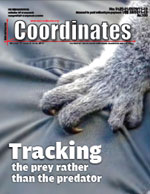NavCom Technology, Inc has announced the release of new software for its Sapphire-based receivers, including the SF-3050, SF-3040, and LANDPAK. The multi-frequency GNSS (GPS+GLONASS) receivers are now capable of supporting NavCom’s new StarFire Rapid Recovery feature, which allows users to quickly regain StarFire accuracy after short…
Russia recently launched a civil remote sensing satellite aboard a Soyuz rocket, lofting a spacecraft with a modernized high-resolution digital camera to collect imagery of Earth for Russian government. The images will be used by emergency personnel, environmental scientists, urban…
Nokia has announced some details on the HERE Venue Maps available for Nokia Lumia devices and Bing Maps. It now features 49,000 buildings in 45 countries. This doesn’t only include shopping malls, but also stadiums, theme parks, historic streets, or other outdoor spaces, such as Carnaby Village and golf clubs. Nokia claims to create precise Venue…
INDUSTRY | LBS | GNSS | GIS | IMAGING | GALILEO UPDATE
Indian navigation satellite set to fly on July 1
Indian Space Research Organisation replaced a faulty component in the PSLV-C22 rocket and rescheduled the flight of the IRNSS-1A satellite, India’s first regional navigation satellite, on it for 11:43 p.m. on July 1, according to …
Surrey Satellite Technology Ltd. (SSTL) has successfully completed the delivery of the payloads for the first four Full Operational Capability (FOC) satellites of GALILEO to prime contractor OHB System AG. The payloads were shipped to OHB in Bremen, Germany for integration of the payload to platform and the start of the satellite integration and test activities.
Mapping information showing the locations of publicly accessible land across New Zealand has been released by the New Zealand Walking Access Commission (NZWAC) to enable researchers, government agencies and app developers embark on their own mapping projects.

Nurture Nature
Climate change baffl es us all with
Undesirable consequences
As extreme heat and cold in many parts of the world
Floods in Europe, Flash fl ood in India
Unexpected summer and winter.
The mankind with fl aunting intelligence and knowledge
And powerful technological tools
May be able to understand and explain such phenomena
But may not be able to address them
Unless changes …

Vol. IX, Issue 6, June 2013
Zip
Tracking the prey rather than the predator with GNSS
Dr Volker Janssen
Integrating surveying methodologies to provide specific solutions
Donatella Dominici, Elisa Rosciano, Michail Elaiopoulos
Improving land administration systems in developing countries
Jouni Johannes Anttonen
Geodynamical study of the territory of Balkan peninsula from GPS solutions
Keranka Vassileva
A hybrid GIS space syntax …
July 2013
GI Forum 2013
2 – 5 July
Salzburg, Austria
www.gi-forum.org
Survey Summit
6 – 9 July
San Diego, USA
www.esri.com/events/surveysummit/index.htm
CASLE International conference on Management of Land and Sea Resources
7-10 July
Glasgow, Scotland
www.casle.org
Esri International User Conference
8 – 12 July
San Diego, USA
www.esri.com
ESA International Summer School on GNSS 2013
15 – 25 July
Davos, Switzerland
www.congrexprojects.com/13m07
IGNSS 2013
16-18 July
Gold Coast, Australia
www.ignss.org
International Geoscience and Remote Sensing Symposium (IGARSS 2013)
22-26 July
Melbourne, …

Convergence – The mantra
The mobile phone has it all.
Camera, music, LBS, Internet, wireless, TV,…
Many such functions were not imagined
When mobile was invented
As its mobility in itself was a major technological leap.
The positioning and navigation technologies
Appear to be following the similar logical transitions
Where in various positioning tools and functionalities
Not only of within the domain but from …










 (5.00 out of 5)
(5.00 out of 5)